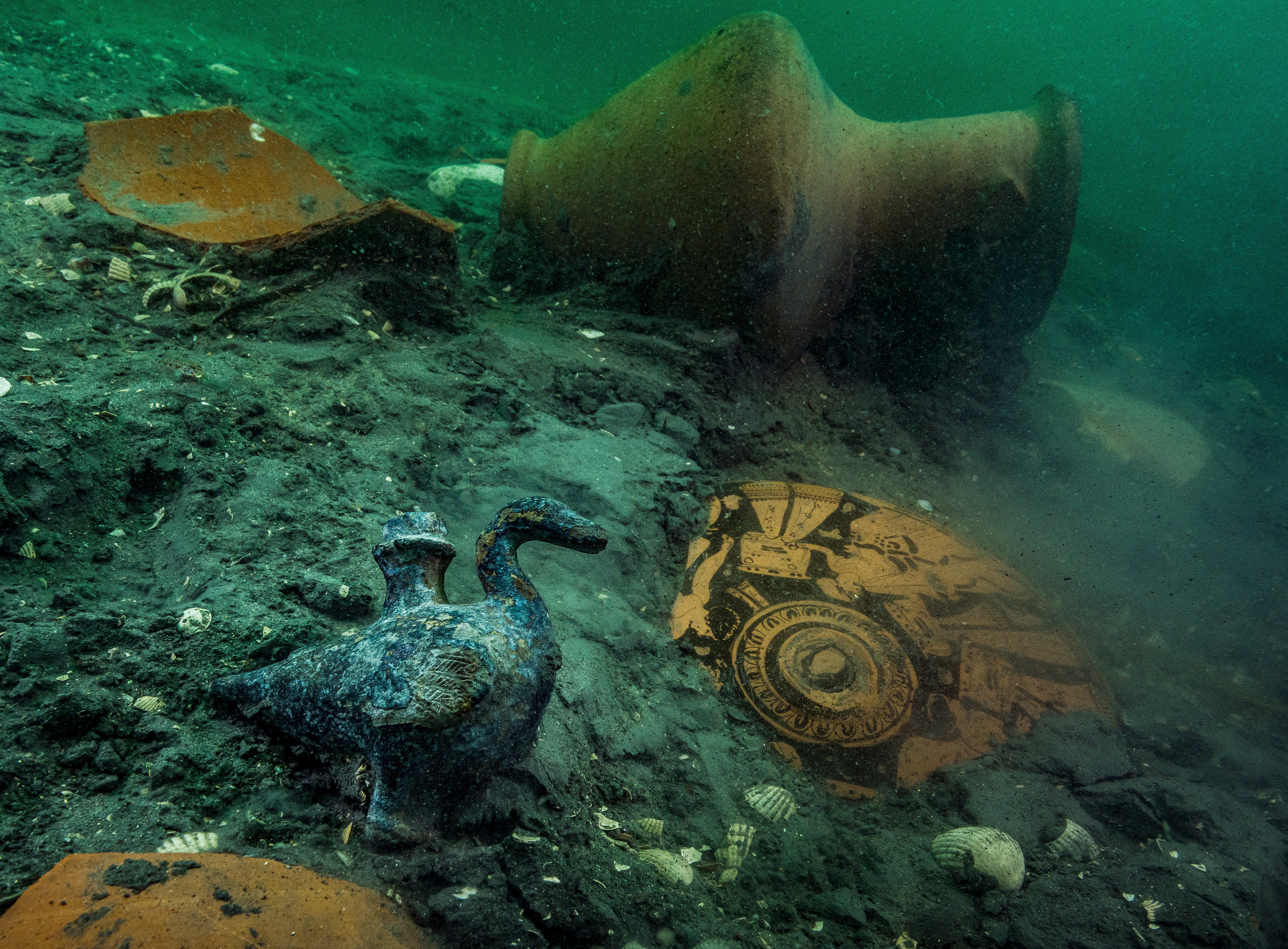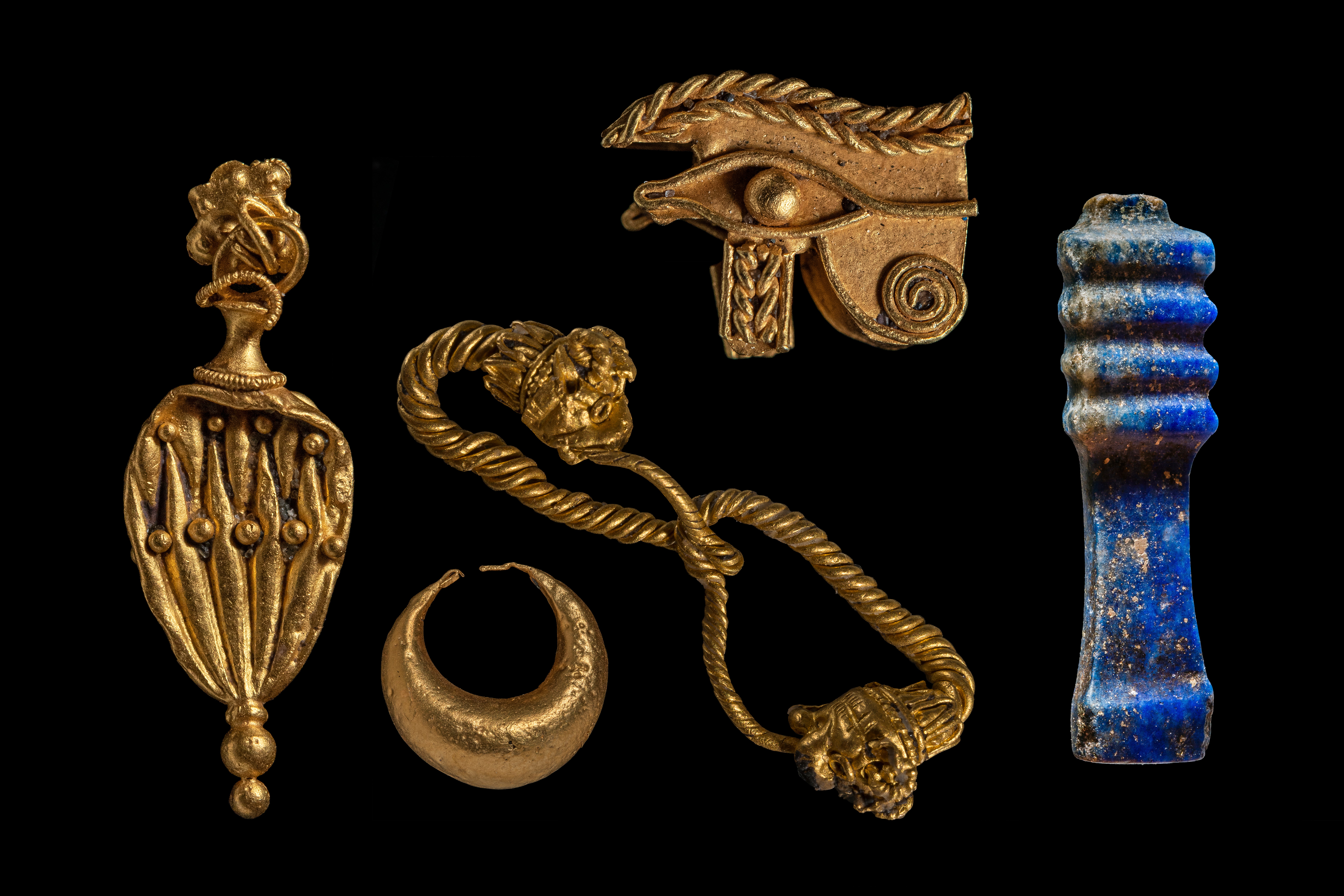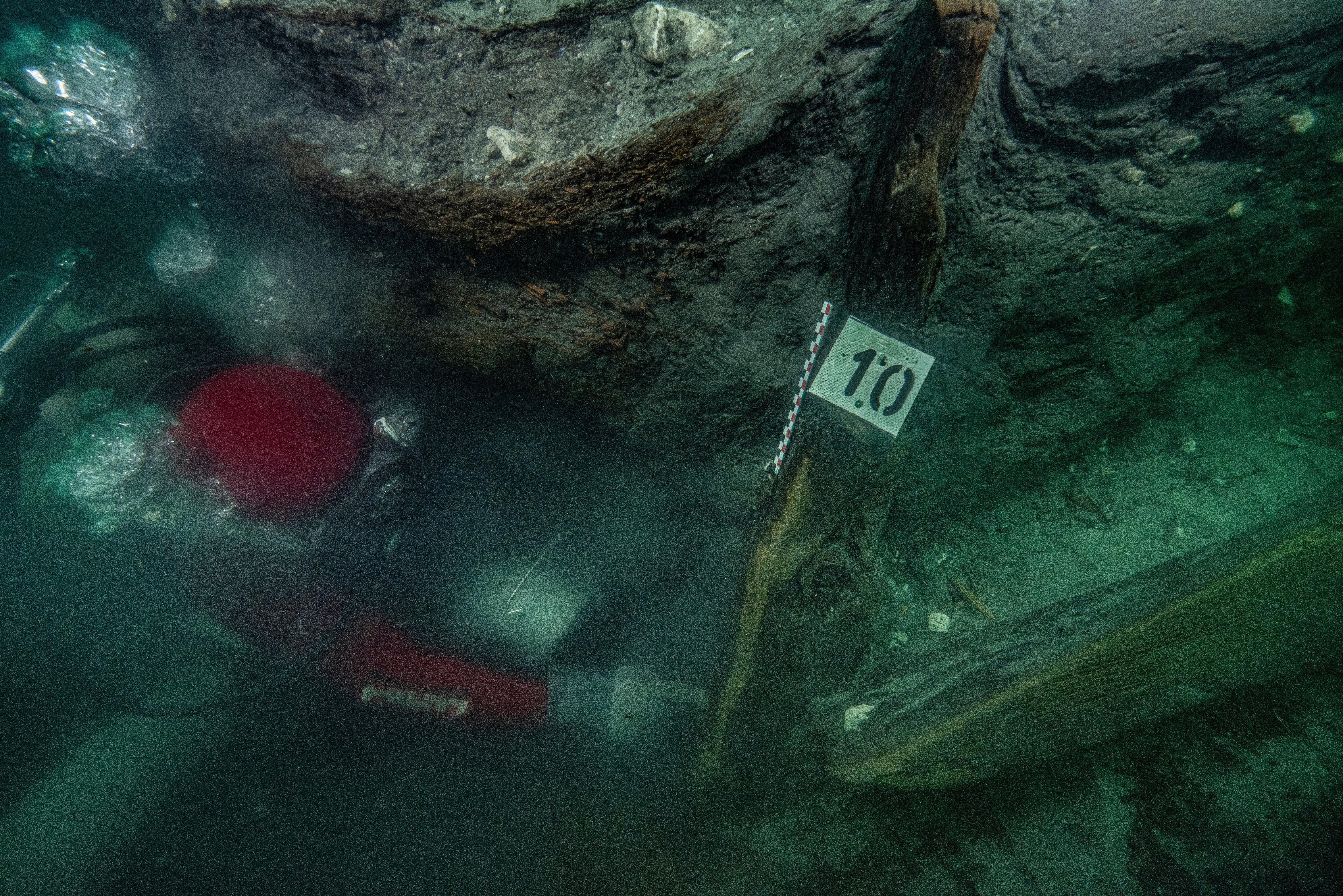Sunken temple reveals ‘treasures and secrets’ in mysterious underwater city
Gold and silver treasure discovered in the ancient Egyptian city of Thonis-Heracleion

Your support helps us to tell the story
From reproductive rights to climate change to Big Tech, The Independent is on the ground when the story is developing. Whether it's investigating the financials of Elon Musk's pro-Trump PAC or producing our latest documentary, 'The A Word', which shines a light on the American women fighting for reproductive rights, we know how important it is to parse out the facts from the messaging.
At such a critical moment in US history, we need reporters on the ground. Your donation allows us to keep sending journalists to speak to both sides of the story.
The Independent is trusted by Americans across the entire political spectrum. And unlike many other quality news outlets, we choose not to lock Americans out of our reporting and analysis with paywalls. We believe quality journalism should be available to everyone, paid for by those who can afford it.
Your support makes all the difference.They lay hidden on the ocean bed for more than 1,000 years, but now the treasures and secrets of an ancient city off the coastline of Egypt are being uncovered.
The remains of a massive temple and a sanctuary dedicated to the Greek goddess of Aphrodite have been discovered in the underwater port city of Thonis-Heracleion by a team led by the European Institute for Underwater Archaeology (IEASM).
The team explored the city’s south canal, where huge blocks of stone from the Amun temple were believed to have crumbled “during a cataclysmic event dated to the mid-2nd Century BC”, according to the IEASM.
The search also revealed gold and silver treasure from the sunken temple, including artifacts that were used to bless the pharaohs as they ascended to the throne. It also found the sanctuary to Aphrodite along with ancient Greek weapons.
The discoveries suggest that Greeks were allowed to relocate, live and worship in the ancient Egyptian city, now located in the Bay of Aboukir near Alexandria.

“Precious objects belonging to the temple treasury have been unearthed, such as silver ritual instruments, gold jewellery and fragile alabaster containers for perfumes or unguents,” IEASM said in a statement. “They bear witness to the wealth of this sanctuary and the piety of the former inhabitants of the port city.”
The Amun temple was where pharaohs came to receive the titles of their power as universal kings, the institute said.
Founded around 2,500 years ago near the mouth of the Nile, Thonis-Heracleion, was once the biggest port city in the Mediterranean Sea.

Until the port of Alexandria was established, it was a significant political site, a hub of ritual ceremonies for the ruling class and a required point of entry into Egypt for all ships coming from Greece.
The discoveries were made with the use of new geophysical mining technologies that can detect cavities and objects buried under layers of clay several metres thick.
“It is extremely moving to discover such delicate objects, which survived intact despite the violence and magnitude of the cataclysm,” said Frank Goddio, the president of the European Institute for Underwater Archaeology.
It is believed that rising water, a series of earthquakes, and a tidal wave contributed to sinking of the city of Thonis-Heracleion in the 8th Century AD. The city’s name and story had become lost through the centuries, only being mentioned in passing in ancient classic texts and rare inscriptions.
Mr Goddio and his team have been working for the past two decades to uncover the secrets of the lost city after it was discovered in 2000.
Join our commenting forum
Join thought-provoking conversations, follow other Independent readers and see their replies
Comments